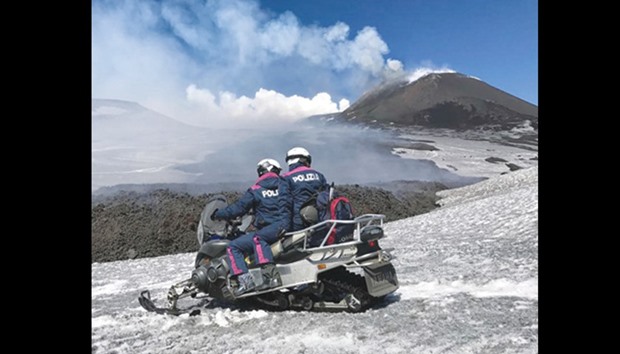The 10 suffered minor burns, cuts and bruises and six were hospitalised.
German volcanologist Boris Behncke described on Facebook how the explosion was triggered by a build-up of steam after molten lava overran a layer of snow.
“I received a bruise on the head but I am fine,” said the Etna specialist.
The explosion occurred at 12.43pm (1143 GMT) when the steam trapped between the lava and the surface of the mountain escaped in a powerful burst, Stefano Branca, of the Italian institute of geology and volcanology (INGV), told AFP.
There were around 35 people in the area close to the explosion, including a BBC team, 15 tourists, scientists and guides, said Nino Borzi, mayor of Nicolosi, the closest residential area.
“There were 10 injuries but none serious,” he said.
BBC science correspondent Rebecca Morelle tweeted that it could easily have been much worse.
“Everyone taken off the mountain – rescue team and guides here were brilliant,” she wrote on Twitter, adding: “BBC team all ok – some cuts/ bruises and burns. Very shaken though – it was extremely scary.”
Morelle said a volcanologist with them on the peak described the incident as the most dangerous in his 30-year career.
“Explosions like this have killed,” she added. “Running down a mountain pelted by rocks, dodging burning boulders and boiling steam – not an experience I ever ever want to repeat.”
The incident happened as Etna burst into life again, two and a half weeks after its first eruption in over a year.
The eruption, from a crater on the southeastern side of the 3,000m (9,800’) peak, sent rocks and molten lava some 200m into the sky above Sicily.

A handout picture taken and released yesterday by the Italian police shows officers patrolling after flying rock and lava erupted from Europe’s biggest active volcano Etna, near Catania in Sicily region.
